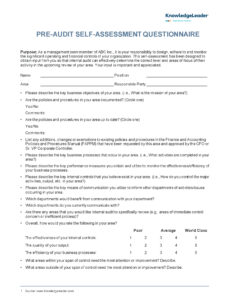The following sections delve deeper into the practical application and construction of these valuable tools, exploring various examples and best practices for their effective implementation.
Key Components of an Effective Request Framework
A well-structured request framework comprises several key elements, ensuring clarity, completeness, and efficiency in the audit process. These components contribute to a smoother audit experience for all parties involved.
1: Request Identifier: A unique identifier, such as a number or code, allows for easy tracking and referencing of individual requests. This promotes organization and prevents confusion, especially in complex audits.
2: Request Description: A clear, concise description of the information or documentation sought is essential. Ambiguity can lead to delays and inaccuracies, so specificity is paramount.
3: Justification/Purpose: Explaining the rationale behind the request helps the auditee understand its relevance and importance. This fosters cooperation and ensures the timely provision of information.
4: Timeline/Deadline: Specifying a due date for the requested information helps manage the audit timeline effectively. Realistic deadlines promote efficiency and keep the audit process on track.
5: Contact Information: Providing clear contact information for inquiries allows the auditee to seek clarification when needed, minimizing potential misunderstandings.
6: Format Requirements: If specific formats are required for submitted documents (e.g., electronic copies, specific file types), these should be clearly stated to avoid unnecessary rework.
7: Data Sensitivity Classification: Marking data sensitivity (e.g., confidential, restricted) helps ensure appropriate handling and protection of sensitive information.
Adherence to these components ensures a robust and effective information-gathering process, contributing to a successful and efficient audit.
How to Create an Audit Request List Template
Developing a standardized template streamlines the audit process, ensuring comprehensive information gathering and efficient communication. The following steps outline a practical approach to creating such a template.
1: Define the Scope: Clearly define the audit’s objectives and scope. This determines the specific information required and helps tailor the template accordingly. A focused scope ensures relevance and avoids unnecessary requests.
2: Identify Key Information Needs: Determine the essential data and documentation required to achieve the audit objectives. This might include financial records, policy documents, or operational data. Careful consideration of information needs ensures a comprehensive audit.
3: Structure the Template: Organize the template logically using clear headings and categories. Include columns for each required data point, such as request identifier, description, justification, deadline, and contact information. A well-structured template promotes clarity and ease of use.
4: Develop Clear Request Descriptions: Craft concise and unambiguous descriptions for each request, specifying precisely what information is needed. This minimizes potential confusion and ensures accurate responses.
5: Establish a Consistent Format: Maintain a consistent format throughout the template, including font, spacing, and numbering. Consistency improves readability and professionalism.
6: Incorporate Version Control: Implement version control to track revisions and ensure all parties are using the most up-to-date template. This prevents confusion and maintains accuracy throughout the audit process.
7: Review and Refine: Before finalizing the template, conduct a thorough review to ensure completeness, clarity, and accuracy. Feedback from stakeholders can further refine the template and enhance its effectiveness.
8: Pilot Test the Template: A pilot test in a controlled environment can identify any areas for improvement and optimize the template’s functionality before full implementation.
A well-designed template, tailored to the specific audit requirements, contributes significantly to a smooth, efficient, and effective audit process. This structured approach benefits both auditors and auditees by promoting clear communication, thorough documentation, and timely completion.
Standardized documentation for gathering information during audits provides a crucial framework for efficiency and completeness. Key components such as clear descriptions, justifications, deadlines, and contact information ensure requests are understood and fulfilled promptly. A well-structured template, tailored to specific audit objectives and incorporating version control, promotes clarity and accuracy throughout the process. Following a systematic approach to template creation, including defining the scope, identifying information needs, and rigorous review, optimizes the effectiveness of these tools. Pilot testing allows for refinement and ensures the template’s functionality aligns with practical audit requirements.
Effective implementation of these structured frameworks contributes significantly to successful audits by streamlining communication, ensuring thorough documentation, and ultimately, enhancing the overall quality and reliability of audit findings. Organizations prioritizing robust information-gathering processes strengthen their control environments and foster greater transparency and accountability.

